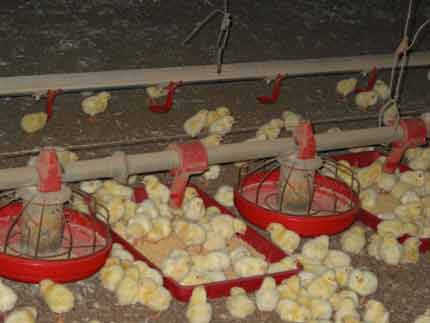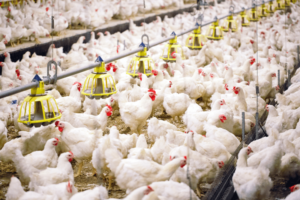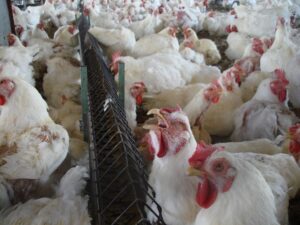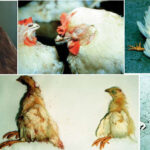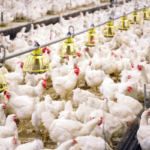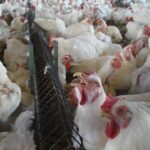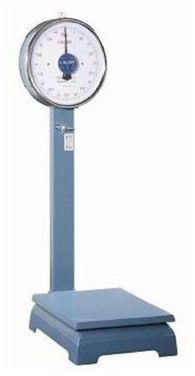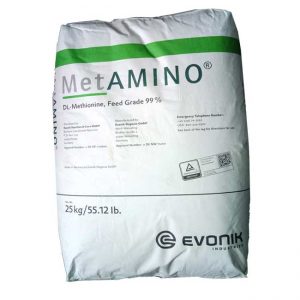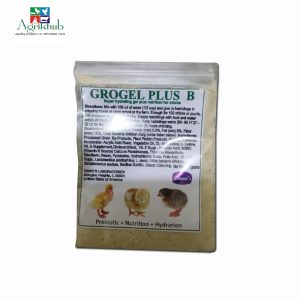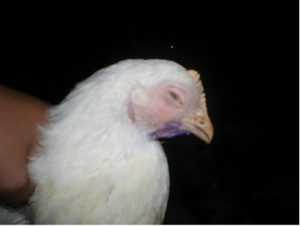
Chronic respiratory disease is one of the major challenges of the respiratory system in poultry. It causes serious devastation to birds. The major cause of this condition is Mycoplasma gallisepticum. This condition is usually complicated by other infectious agents such as E. Coli, Newcastle Disease Virus, Infectious Bronchitis Virus and usually triggered by stress factors such as poor ventilation, poor handling, excessive exposure to smoke, chilling of chicks etc.
During brooding, farmers usually commit serious blunders which eventually lead to the early outbreak of CRD in chicks. Usually, the brooding facility is covered with curtain materials to allow for heat trapping providing the chicks with warmth needed for their proper growth and development because their thermo-regulatory mechanism is poorly developed at this phase of life. In a short time, the air in the brooding facility becomes stale due to increase in the concentration of poisonous gases such as carbon-dioxide and ammonia.
The chicks breathe in oxygen from the air and release carbon-dioxide and water vapors back into it. On the other hand, Ammonia is formed by the microbial breakdown of uric acid in the poultry manure and a variety of moulds and bacteria have been identified which cause these reactions. The rate of ammonia production and volatilization from litter is dependent on pH, moisture content, ventilation rate, air velocity, manure nitrogen concentration, and temperature. The condition of litter and ventilation are the main factors affecting ammonia concentration in poultry houses. Moisture content, pH and the temperature of the litter influence the degradation of uric acid by bacteria. Poor ventilation, loose droppings and faulty, over filled or low positioned drinkers, are common causes of wet litter in poultry houses which ultimately increases the ammonia concentration.
Since during brooding, the entire facility is walled with curtain materials as earlier mentioned, this provides a perfect condition for the production of high concentration of ammonia within a short period of time.
Ammonia as a gas has a distinctive, pungent smell and is known for its irritating affect on the eyes and the respiratory tract at high concentration. It can cause serious damage to the respiratory system when birds have prolonged exposure to high concentration of the gas.
The ammonia concentration in the poultry houses should not exceed 25ppm (25 part per million). Above this level, the performance of birds is adversely affected. Prolonged exposure to high level of the gas results to loss of appetite, poor feed conversion, reduced performance of flock in terms of growth, immuno-suppression, and increased susceptibility to respiratory infections such as CRD, E-Coli, Newcastle Disease, and Infectious Bronchitis.
Humans can generally smell ammonia at concentrations between 20ppm and 30 ppm, so as a farmer; choking sensation of ammonia gas in the brooding facility should alert you of an impending danger and appropriate action must be taken on time to avert it.
EFFECTS OF AMMONIA GASES ON BIRDS
Respiratory System
Ammonia gas has deleterious effects on various structures of the trachea such as the cilia and the mucosal linings of the trachea. The nature and extent of damage depends on the concentration of ammonia in the poultry house and the duration of exposure. The cilia in conjunction with the mucosal linings and the goblet cells all form the defense mechanism of the respiratory system. Damage to this system will translate to pathogens having easy access to the respiratory system.
At high concentration and prolonged exposure, ammonia causes serious irritation to the conjunctiva and cornea of the eyes. This can lead to reddening, swelling and partial or complete blindness of one or both eyes in birds.
MANAGEMENT OF AMMONIA
Below are suggestions on how to keep the level of ammonia low in poultry pens.
Dietary management
Birds should be provided with balanced diet fulfilling all the nutritional requirements for their proper growth and development. Excess protein in the diet will be passed out of the body through faeces which will eventually lead to more ammonia production and release. Also excessive amount of fibre content in diet will encourage birds to drink more water resulting in wet litter and increased production of ammonia.
Stocking density
Overstocking should be avoided as much as possible as this will lead to high level of fecal material deposition within the provided space. Also the litter will also get wet easily. As earlier mentioned, both conditions favor the production of high concentration of ammonia.
Proper ventilation
During brooding after the third day of life, the curtain materials should be raised on both sides of the long sides of the pen on a daily basis when the sun is high up in the sky to allow for stale air replacement by fresh air. The curtain should placed back in its normal position at night to allow for proper heating of the facility at night. On a rainy day or when the weather is extremely cold, the curtain should not be raised to avoid excessive chilling of the chicks. This practice will not only ensure that birds are provided with fresh air, it will also help keep the litter drier and slow down the production and release of ammonia.
House Temperature
The temperature within the brooding facility should be gradually reduced in accordance with breed standard for the chicks as they age. This will help greatly in reducing the rate of ammonia production within the brooding facility.
Nutrient digestibility
Improvement in nutrients digestibility can be achieved by adding additives such as enzymes, probiotics, prebiotics to poultry feed. This can greatly reduce the level of ammonia production because a good portion of the nitrogenous raw materials needed for ammonia production would have been further broken down leading to low level in feaces.
Litter management
Litter moisture should be kept very low between 15-25%. This will greatly slow down the activities of bacteria that breakdown uric acid in fecal droppings of poultry. Caked litter should be promptly removed and replaced with fresh shavings materials.
Litter amendment
Litter acidification will greatly reduce the activities of microbial agents in the litter hence reduction of ammonia levels in the pen.
Water management
Water spillage should be avoided as much as possible and in cases of spillage, the wet litter in the affected area should be removed and replaced with fresh shavings. Drinkers should be checked periodically to detect any leakage early enough.

